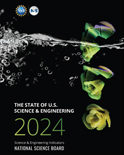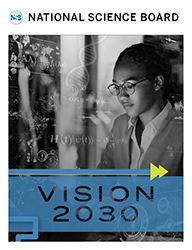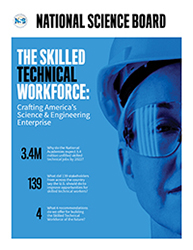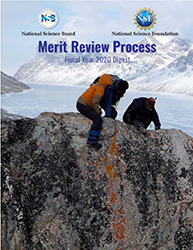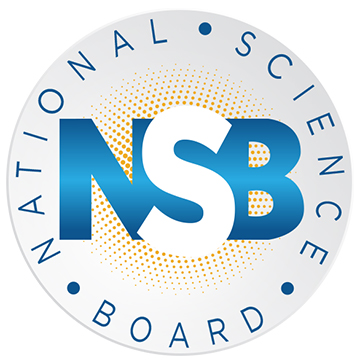
COVID-19 pandemic exacerbated widening gap and overall decline in students’ math scores
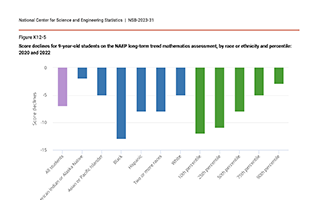
Score declines for 9-year-old students in mathematics from 2020 to 2022 (Credit and Larger Version)
October 26, 2023
A national mathematics assessment in 2022 captured the largest decline in scores for 4th and 8th graders over the past 33 years, with a disproportionate drop for students who are Black, Hispanic, from low-income families, and already scoring in the lowest 10th percentile.
These and other trends are in the Elementary and Secondary STEM Education report that the National Science Board published today as part of the 2024 congressionally mandated Science and Engineering Indicators suite of products on the state of the U.S. science and engineering enterprise. The reports are prepared by the U.S. National Science Foundation’s National Center for Science and Engineering Statistics under the Board’s guidance.
“The results in this report are quite devastating and demand an immediate response,” says NSB Science and Engineering Policy Committee Chair Maureen Condic.
The pandemic caused unprecedented disruptions to K-12 education starting in March of 2020 and continuing through the following school year. As most schools switched to remote formats, many students seemed to lose momentum on their math and science learning.
“These assessments help us understand the COVID-19 pandemic’s long-term impacts on future STEM talent and economic growth,” Condic says. “Decision makers can use this report to inform a response both at the state and federal level. Any actions must help support our teachers who can have a huge impact on learning.”
Developing STEM talent is a top goal of the Board’s Vision 2030 report, which lays out actions to ensure that by 2030, the U.S. will have made “the investments needed to fuel an innovation economy and remain preeminent in science and engineering.”
The new education report provides insight into U.S. efforts to reach these goals by quantifying the pandemic’s impact on student progress. Students' scores varied by their location, with 8th graders in the Northeast and Midwest scoring higher than their counterparts in the South and West. Eighth graders across the country reported lower levels of proficiency in math compared to 4th graders.
The report also includes data from 2019 that show U.S. 8th graders ranking in the middle compared to students in other countries with advanced economies. Furthermore, U.S. high school students are taking more math and science courses and completing more advanced courses as of 2019, but their scores on the national math assessments have not improved over the same period.
The report draws on data supported by the U.S. Department of Education’s National Center for Education Statistics, including the National Assessment of Educational Progress (NAEP)—the “Nation’s Report Card”—and the Trends in International Mathematics and Science Study.
A pandemic of lost learning
The report notes research literature that suggests that persistently lower scores for economically disadvantaged students and Black, Hispanic, and American Indian or Alaska Native students may be attributable to educational and societal inequities like being in schools with inadequate resources and less-qualified teachers, lacking adequate medical care, experiencing food insecurity, and lacking a safety net. Not only did COVID-19 likely exacerbate those issues, but it also likely had a larger impact on students in high-poverty schools because of the complexity of incorporating remote learning during the pandemic, among other issues.
The report draws on two NAEP math assessments: the long-term trend assessment, which has maintained a consistent curriculum since 1978, and the main NAEP, which changes more frequently to reflect nation-wide curricular trends. Scores for both assessments are reported on a 500-point scale.
- The long-term trend math assessment shows a 7-point drop among 9-year-old students from 2020 to 2022. Average scores had increased with each assessment since 1978 until a drop between the 2012 and 2020 assessments, followed by a steeper decline between 2020 and 2022. The National Center for Education Statistics added an assessment in 2022 to measure how COVID-19 impacted student performance; the next assessment is scheduled for 2025.
- The long-term trend assessment shows that average scores for Black 9-year-old students fell 13 points between 2020 and 2022, 8 points for Hispanic students, and 5 points for White students. The average score for students scoring in the 90th percentile dropped 3 points from 2020 to 2022 while the average score for students scoring in the 10th percentile dropped 12 points during the same timeframe.
- The main NAEP math assessment, which started in 1990, shows a 5-point drop among 4th graders and an 8-point drop among 8th graders from 2019 to 2022. Scores had been on the rise until a drop between 2013 and 2015 and then a steeper drop from 2019 to 2022. The assessment was administered in 1990, 1992, 1996, 2000, 2003, and then every two years until 2019.
- The NAEP math assessment also looks at trends in students’ math proficiency. In 2022, the percentage of students scoring “proficient” or above (as defined by the NAEP) dropped by 5 percentage points for fourth graders and 7 percentage points for eighth graders compared with 2019. In 2022, 36% of fourth graders and 26% of eighth graders scored proficient or above, indicating that performance was lower at higher grades.
To delve more deeply into sample questions and tease out specific scores for various groups of students, visit the NAEP item maps tool.
International trends prior to the pandemic
The report includes 2019 data on how U.S. 4th and 8th graders compared to international students at the same level. The Trends in International Mathematics and Science Study began in 1995 and collects data every 4 years. The 2019 results show that the U.S. had higher average scores than most participating countries in both math and science at the 4th and 8th grade levels but had a relatively large score gap between the highest and lowest performing students for both subjects and grades.
Among 19 advanced economies that participated in the assessment, the U.S. placed 7th in math, with a score (515) statistically similar to England (515), Finland (509), and Australia (517). U.S. 8th graders’ average science scores (522) placed the U.S. 8th among the other countries, with similar scores to Sweden (521) and Ireland (523).
On both assessments, Singapore scored the highest (616 for math and 608 for science), followed by Taiwan (612 and 574 respectively).
Elementary and Secondary STEM Education is the second of 10 Science and Engineering Indicators reports that the NSB will publish over the coming months through spring of 2024.
About Science and Engineering Indicators
Science and Engineering Indicators is a congressionally mandated report on the state of the U.S. and international science and engineering enterprise. Indicators provides high-quality quantitative information on the enterprise in a series of reports and a data tool that provides state-level data.
About the NSB
The National Science Foundation Act of 1950 charged the NSB with two roles: to be the governing board of the NSF and an advisor to Congress and the President on policy matters related to STEM research and STEM education. Selected for their distinguished service and accomplishments in academia, government, and the private sector, the Board’s 24 presidentially appointed members are leaders in STEM research and education.
About the NCSES
NSF’s National Center for Science and Engineering Statistics (NCSES) is the nation's leading provider of statistical data on the U.S. science and engineering enterprise. As a principal federal statistical agency, NCSES serves as a clearinghouse for the collection, interpretation, analysis, and dissemination of objective science and engineering data.
Media Contact: Elizabeth Jeffers, National Science Board, (703) 292-7496, ejeffers@nsf.gov
The U.S. National Science Foundation propels the nation forward by advancing fundamental research in all fields of science and engineering. NSF supports research and people by providing facilities, instruments and funding to support their ingenuity and sustain the U.S. as a global leader in research and innovation. With a fiscal year 2023 budget of $9.5 billion, NSF funds reach all 50 states through grants to nearly 2,000 colleges, universities and institutions. Each year, NSF receives more than 40,000 competitive proposals and makes about 11,000 new awards. Those awards include support for cooperative research with industry, Arctic and Antarctic research and operations, and U.S. participation in international scientific efforts.
Useful NSB Web Sites:
Home Page: http://www.nsf.gov/nsb
Media Contact: http://www.nsf.gov/staff/staff_bio.jsp?lan=nlymn&org=NSF
News: http://www.nsf.gov/nsb/news
Meetings: http://www.nsf.gov/nsb/meetings
Publications: http://www.nsf.gov/nsb/publications
Facebook: https://www.facebook.com/NationalScienceBoard
Twitter: https://twitter.com/NSF_NSB
YouTube: https://www.youtube.com/channel/UCkrHRzuGSrPp2haQs0T_Pww
Useful NSB Web Sites:
Home Page: http://www.nsf.gov/nsb
Media Contact: http://www.nsf.gov/staff/staff_bio.jsp?lan=nlymn&org=NSF
News: http://www.nsf.gov/nsb/news
Meetings: http://www.nsf.gov/nsb/meetings
Publications: http://www.nsf.gov/nsb/publications
Facebook: https://www.facebook.com/NationalScienceBoard
Twitter: Twitter: https://twitter.com/intent/user?screen_name=NSF_NSB
YouTube: https://www.youtube.com/channel/UCkrHRzuGSrPp2haQs0T_Pww
To view PDF documents, please download Adobe Acrobat Reader.
